On my trip to Colombia, I spent three nights in Salento, a small hilly town filled with colourful architecture and surrounded by lush green landscapes and coffee plantations.
Colombia is a diverse country, with much to offer outside the big cities. Here are 10 impressions from my first visit to Salento, my first small-town experience in Colombia.
In This Post
- 1. Take Your Time Getting There
- 2. Hike the Cocora Valley Trail
- 3. Do a Coffee Plantation Tour
- 4. Play Tejo, the World’s Most Explosive Bar Game
- 5. Where to Stay
- 6. What to Eat
- 7. Ride Dirty on the Back of a Willy
- 8. Visit Filandia
- 9. Do a Waterfall Tour on Horseback
- 10. Stay as Long (or as Short) As You Want
- Conclusion
1. Take Your Time Getting There
Getting to and from Colombia’s small towns is a bit of a journey. The country’s large size, mountainous roads, and general unpredictability can make for slow road travel.
(Case in point, I’m drafting this article stuck on a coastal highway behind an accident? Checkpoint? Military convoy? I’m not sure.* The bus driver literally just turned off the engine. We’re three hours into a two-hour journey, and only halfway there.)
I opted to fly to Salento instead. However, while I’ve found that air travel in Colombia can be reliable, it isn’t without its faults.
First, I tried to book with EasyFly, a budget carrier that flies out of Medellín’s equivalent of Billy Bishop. The website wouldn’t process a foreign credit card, and I didn’t have the time or patience to try to reach an agent. (By all accounts, making purchases online in Colombia is unreasonably difficult.)
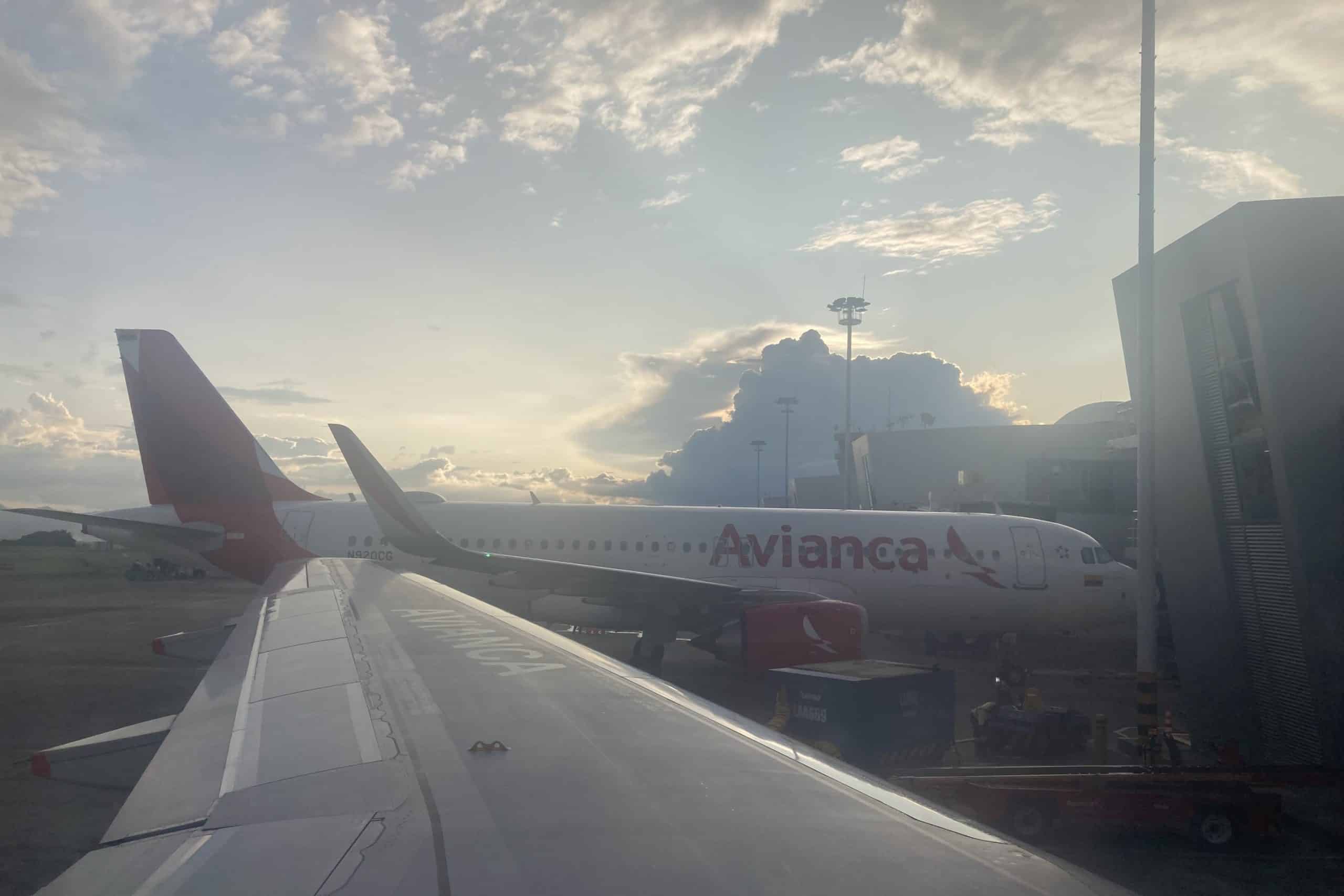
Instead, I found affordable Avianca flights that fit my schedule – but out of the main airport much further away, and with a connection in Bogotá, which was quick but quite a detour.
Salento doesn’t have an airport; instead you have to fly into nearby Pereira or Armenia. I opted for Pereira, with more frequent service. Both towns are about an hour by bus from Salento.
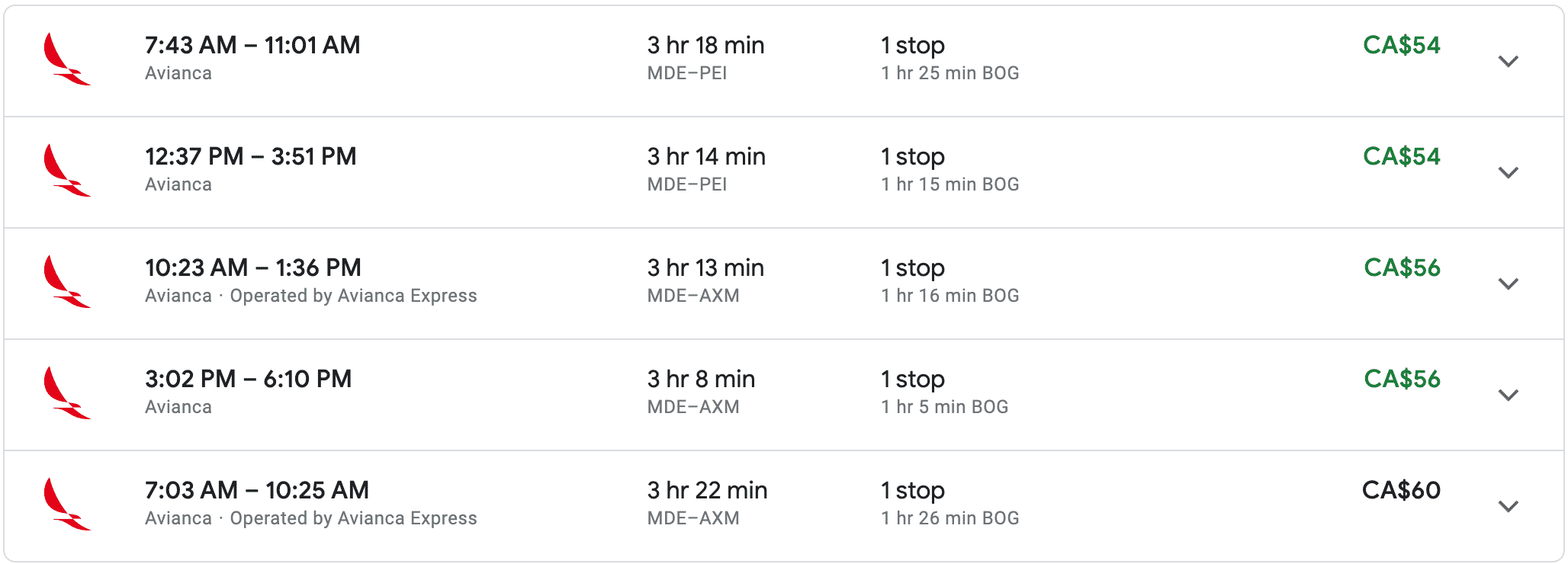
Unfortunately, I missed the last bus from Pereira that night. (Buses in Colombia stop running for the day when they feel like it, a challenge I faced more than once.)
I hired a taxi instead, which for some reason had to return from the bus terminal back to the airport to get a permit to take me to Salento (as best I could understand).
All in all, between the connecting flight and the unnecessary detour from the Pereira airport to the bus terminal and back, my journey door-to-door took about as long as it would’ve just to take the bus from Medellín to Salento, assuming optimistically that it would arrive on time. I also paid just about as much for the taxi from Pereira to Salento as I did for my flights.
With neither time saved nor money saved, and a stressful travel day, I would’ve preferred to take the bus and at least enjoy the scenery, which would’ve been gorgeous if Pereira is any indication.
Point being, however you choose to make your way to Salento, be prepared for some delays, and trust that it will be worth it.
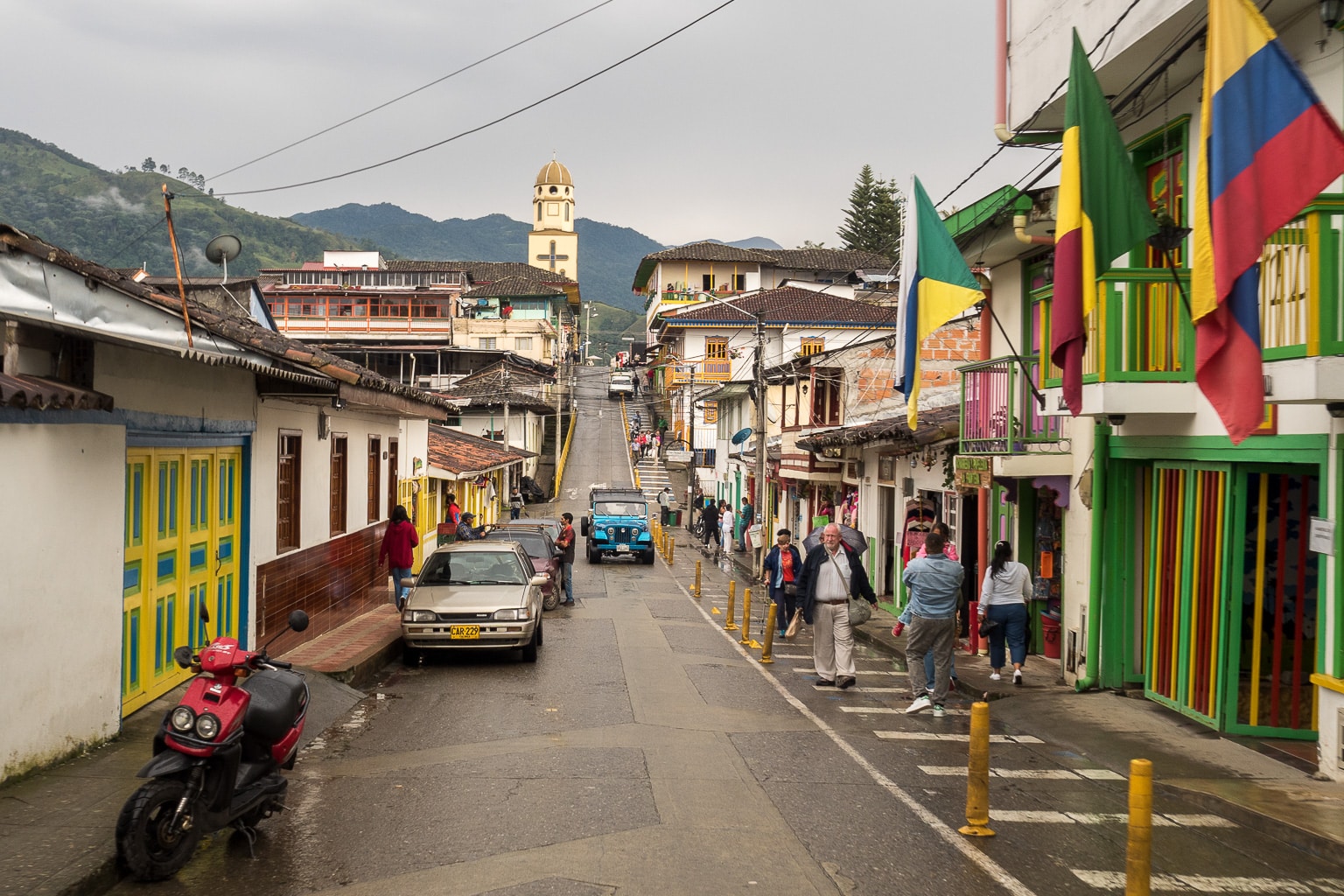
2. Hike the Cocora Valley Trail
Salento’s top attraction is the Cocora Valley hike.
The valley is home to wax palms. It’s the tallest species of palm tree in the world, unique to the region.
I visited at the tail end of the dry season. It made for some magical fog playfully dancing with the mountains and palm trees. It also meant we had intermittent rain and some very muddy parts of the trail.
When you arrive, you have the option of renting gumboots. I prefer to hike in something more supportive with better grip. There’s only one stream crossing, and if the bridge is out you can do it barefoot or find a log spanning the river banks. Gumboots may be more useful in the wet season, but otherwise you can do without them.
There are a few routes to visit the valley, all from the same trailhead:
- An out-and-back directly to the wax palms. This is the best hike if your fitness isn’t as strong. When you arrive, continue straight at the blue gate.
- The main loop – this is the one I did. When you arrive, turn right at the blue gate – that way, you’ll save the best for last and do the steep uphills on less scenic parts of the trail. Keep left at all major junctions as you complete the loop counterclockwise.
- From the main loop, there are a couple of spur trails to other points of interest if you wish to extend your hike.
The main loop is about 11 kilometres long has about 1,000 metres of elevation gain and descent. It took me a bit over four hours to complete, moving at a casual pace as I socialized with other hikers and took lots of photos.
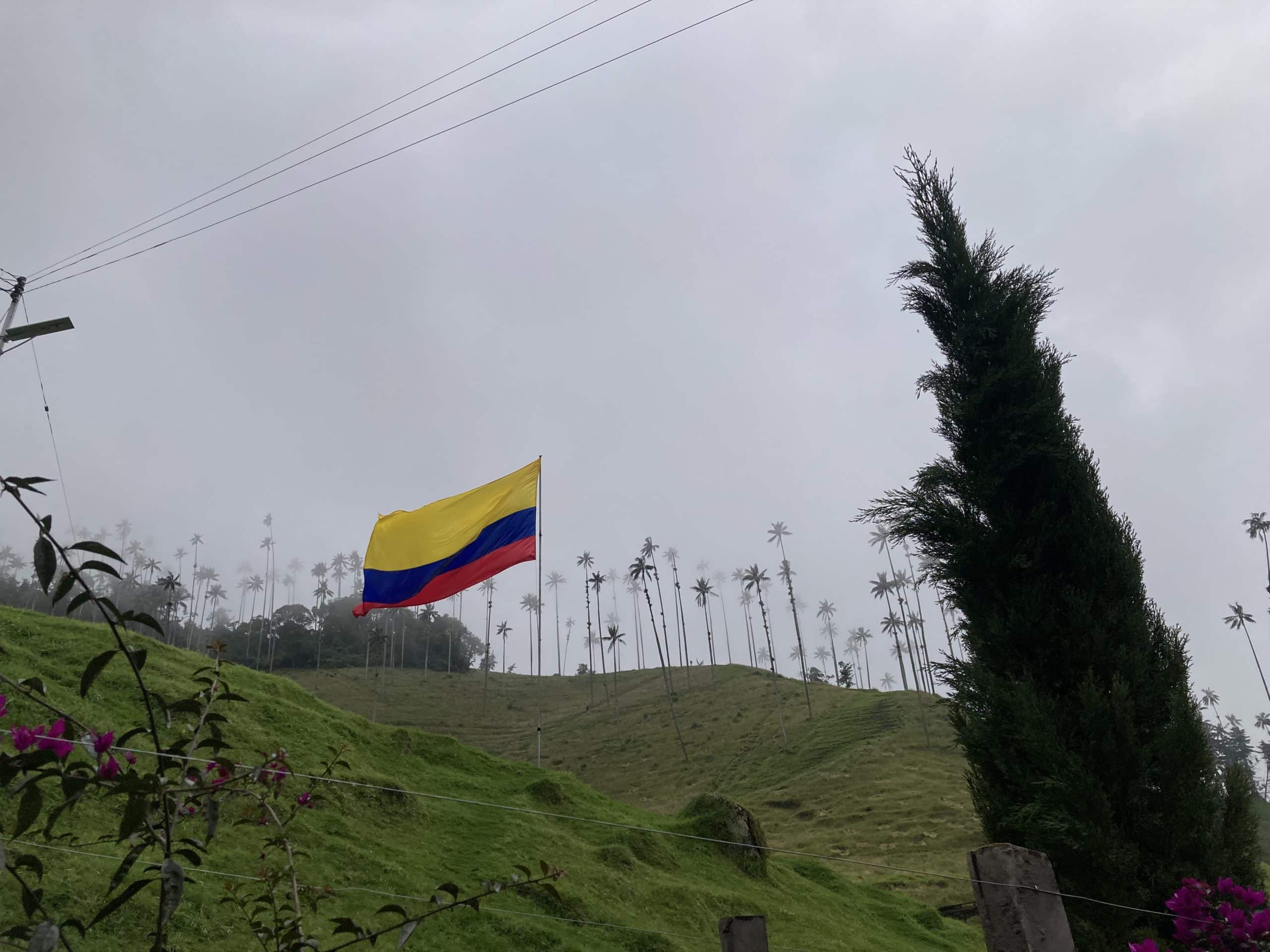
There are a couple of small shops and restaurants along the way, selling snacks and refreshments.
I’ve done a lot of hiking in Canada and around the world, and I really enjoyed the Cocora Valley. It’s a satisfying but not arduous activity in a beautiful area, suitable for hikers of all levels of experience (assuming a baseline level of all-around fitness and health).
3. Do a Coffee Plantation Tour
Salento is in the heart of Colombia’s coffee region, with countless plantations in the countryside. Colombia is the third-largest coffee producer in the world, and a great place to do a tour and see the process.
I did a tour at Finca El Ocaso, a charming plantation house. They run tours daily in English or Spanish. I did the basic tour as I’m not a big coffee aficionado, but they also offer a longer tour that goes more in depth on the different processes and tasting notes.
We learned about the lifecycle of a coffee plant over multiple growing seasons, and about different species and cultivars of the plant. For a country known for its coffee, it’s actually hard to get an excellent cup in Colombia, as they export most of their first-rate beans.
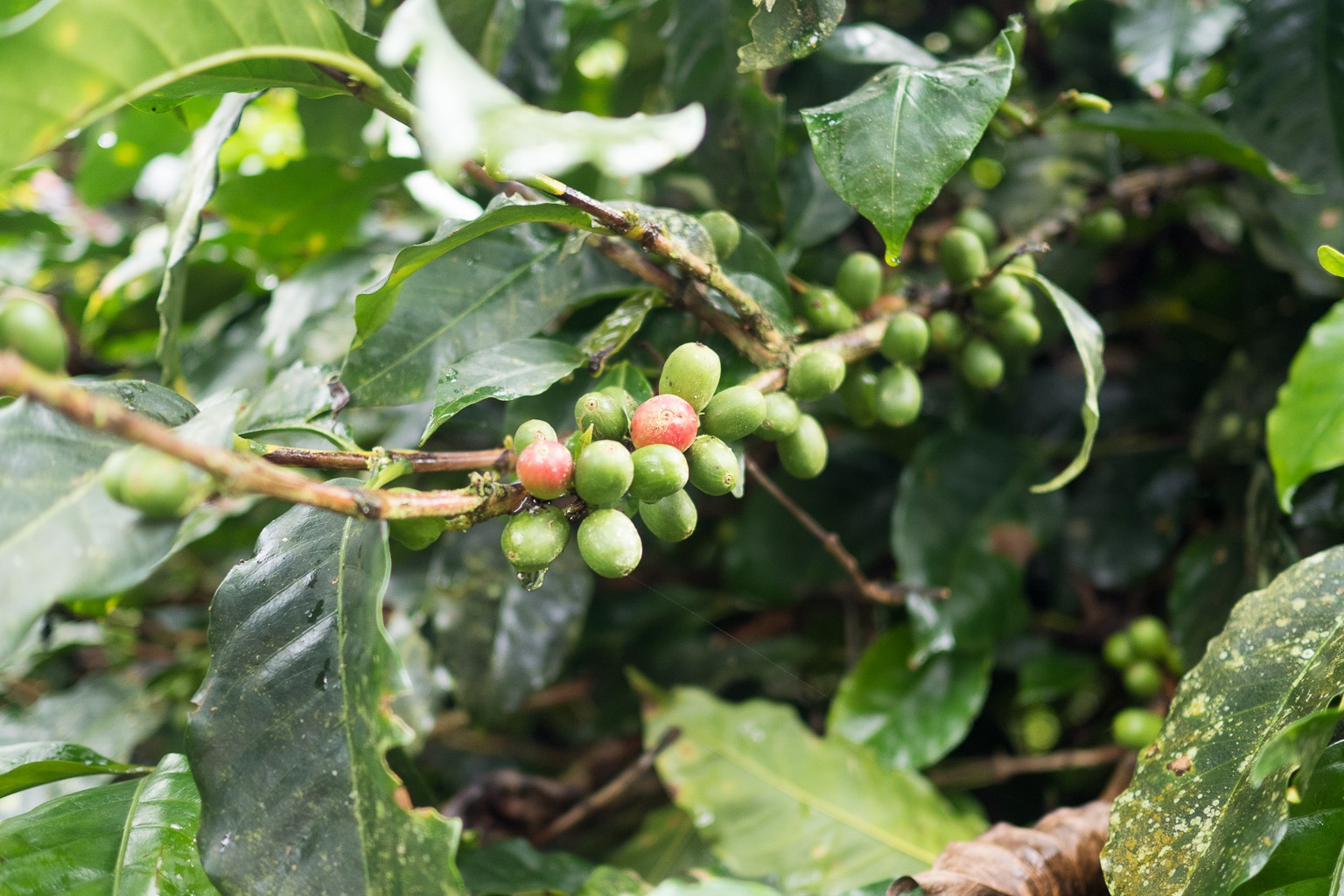
We also saw historical and modern tools used for splitting, drying, and roasting the beans.
At the end of the tour, we briefly discussed the impact of different roasting and steeping techniques on flavour and caffeine extraction. And of course, we finished with a tasting!
4. Play Tejo, the World’s Most Explosive Bar Game
Tejo is a traditional Colombian bar game. It’s very popular in Salento and typically associated with the town.
Sight unseen, I was describing it as “beer pong with firecrackers.” A more accurate description would be “throwing rocks at gunpowder.”
On a clay backboard, arrange a target made out of paper packets of gunpowder. Then take balanced rocks of assorted weights and throw them at the target, trying to hit the gunpowder to make it explode. Heavier rocks are harder to aim but more likely to cause an explosion if they connect.
There’s a scoring system based on where your rock lands, but let’s be real – either you get an explosion or you don’t, that’s the only rule that matters!
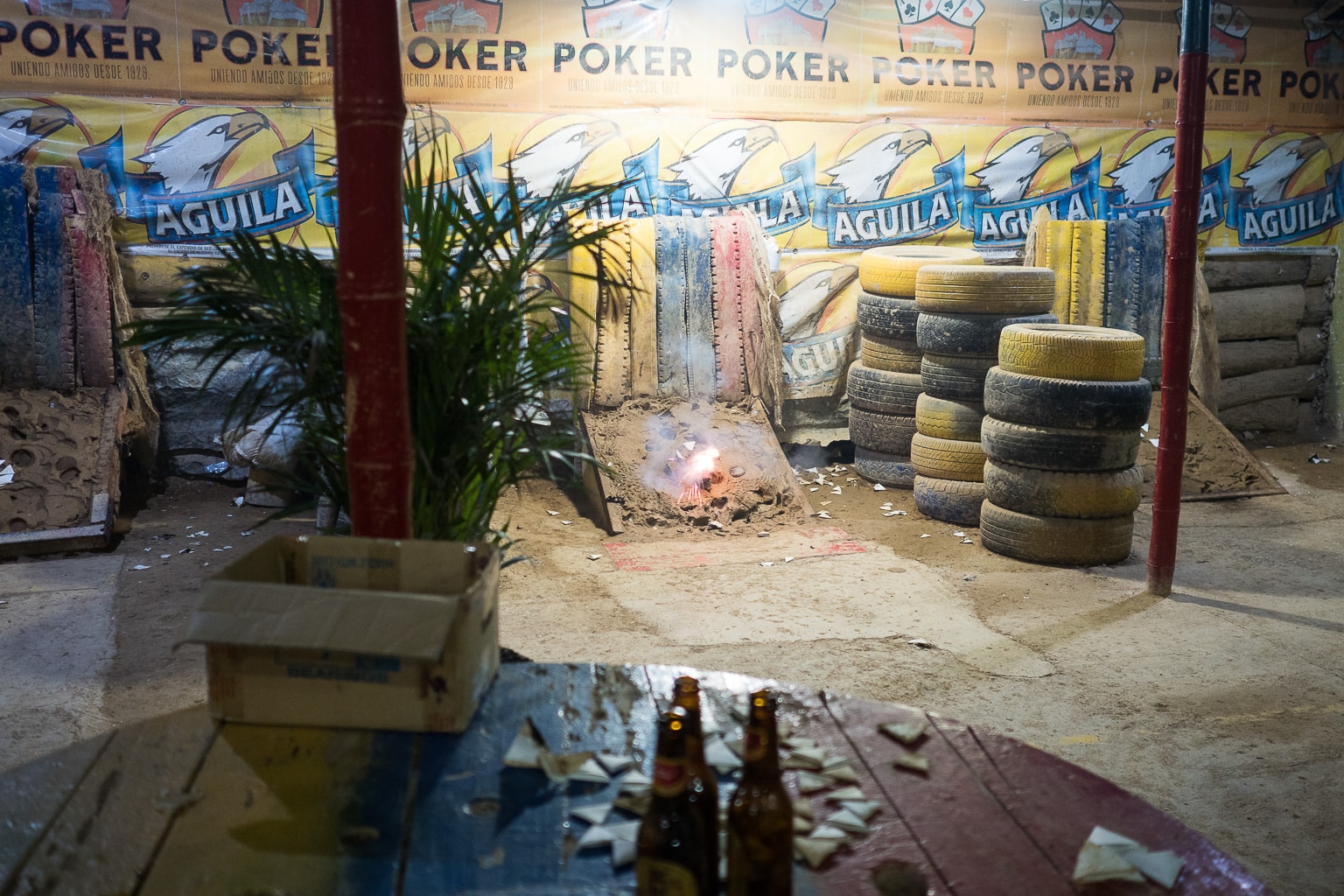
Tejo sounds fun. And it’s a lot more fun than it sounds. You can play with a group of any size, and it’s a raucous time once the beers get flowing.
In Salento, you can play at Los Amigos, or in the basement of the pool hall on the main drag. Both are friendly to drop-ins, whereas I’ve heard that in the big cities, tejo venues can operate a bit more like private members’ clubs.
5. Where to Stay
Salento is very much on the backpacking circuit’s radar, with plentiful hostels all over the small town. But there’s also a lot of boutique hotels if that’s your preference.
I stayed three nights at Hotel El Mirador del Cocora. I booked during a brief Double Nights promotion on Hotels.com, which happened to line up with my trip perfectly. Every room is unique, and I got a basic queen bed with a peekaboo view for about $60 per night.
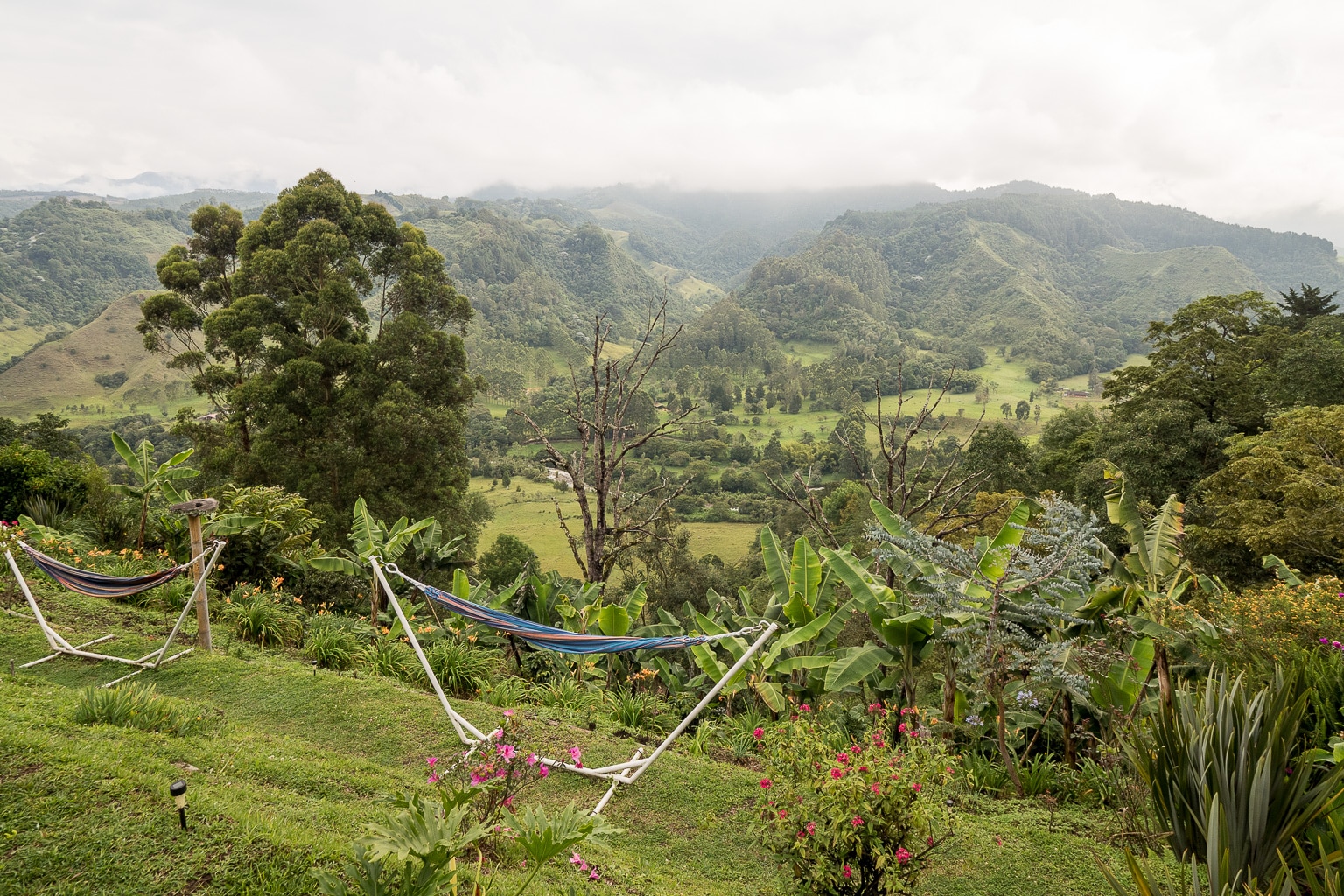
The hotel has all of the quirks of any offbeat accommodation: hot water in the shower takes five minutes, the toilet seat is half detached, electrical outlets hang by a thread, and so on. But there was nothing wrong with the place.
The best part of the property is, without question, the terrace. The hotel is at the top of the hill on the edge of town, and from the covered terrace there are spectacular views of the green valley below. It’s an excellent place to watch fog and colourful birds flit in and out of view as you eat, work, or simply relax. It’s worth staying here for the vista alone, even if you spend most of your daylight hours out and about.
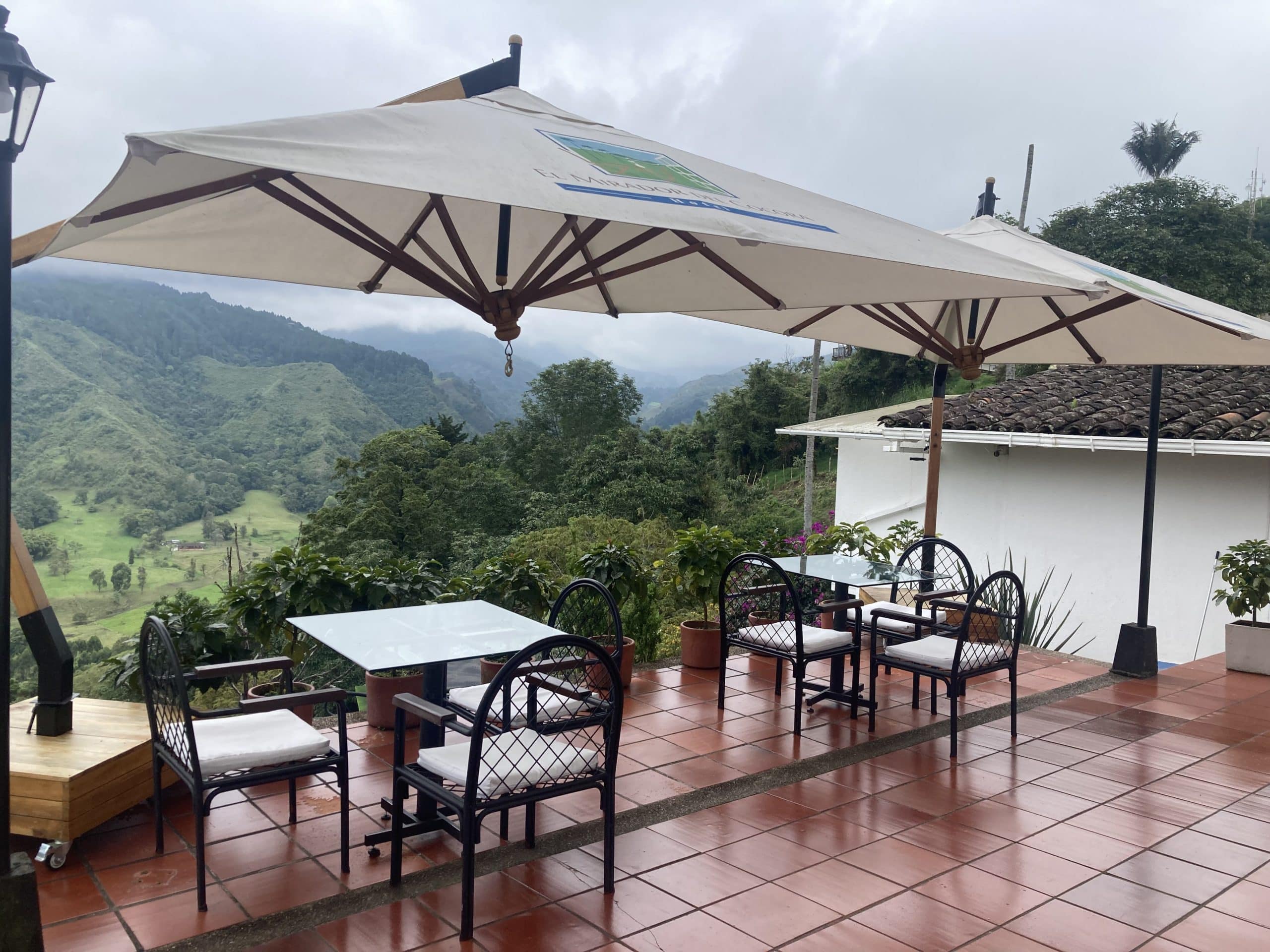
Speaking of eating, the property offers breakfast included in the room rate. They have standard fare including fruit, eggs made to order, bread usually in the form of a traditional arepa, and coffee and orange juice.
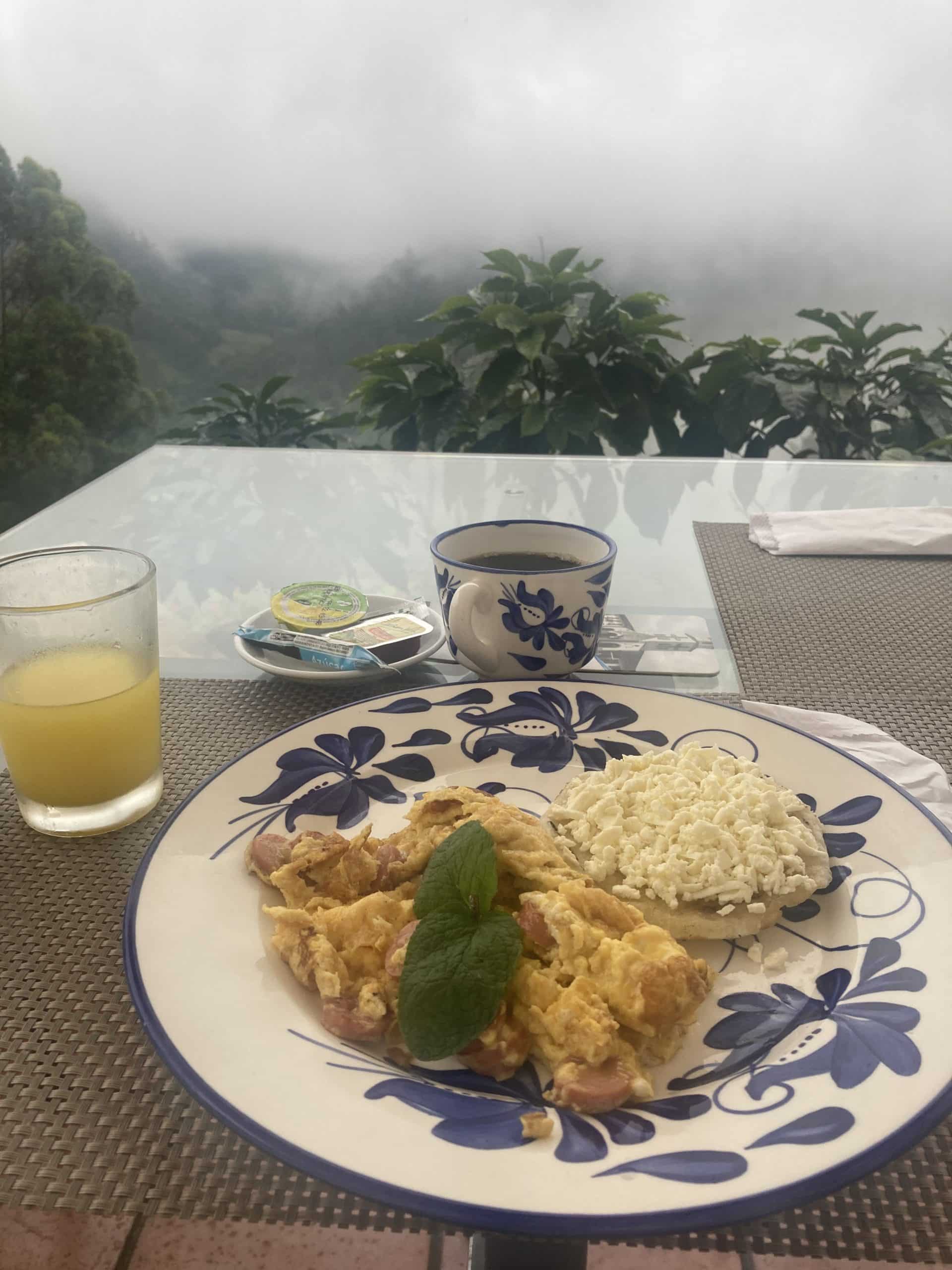
You can also find lodging in the valleys outside of the town centre, including hostels, hotels, camping, glamping, and eco-resorts and wellness retreats. These locations in the valleys surely have wonderful environments, but I’d recommend staying in town for ease of getting around and a wider selection of places to eat.
6. What to Eat
Salento has a handful of tasty dining options.
Trout is a local specialty, plentiful in the region’s rivers. You can find trucha at just about any restaurant in town. I ate at Camino Real Parrilla Bar, a sprawling garden patio where I ordered the fish with coconut and kiwi flavours, and the largest side of fried plantain I’ve ever seen.
For day hikes and excursions, you can pick up a bagged lunch from Brunch (yes, the place is just called Brunch). It was good food and great value.
Brunch also makes a delicious huevos rancheros, should you tire of breakfast at your accommodation. They’re one of the more anglophone-friendly eateries I found in town.
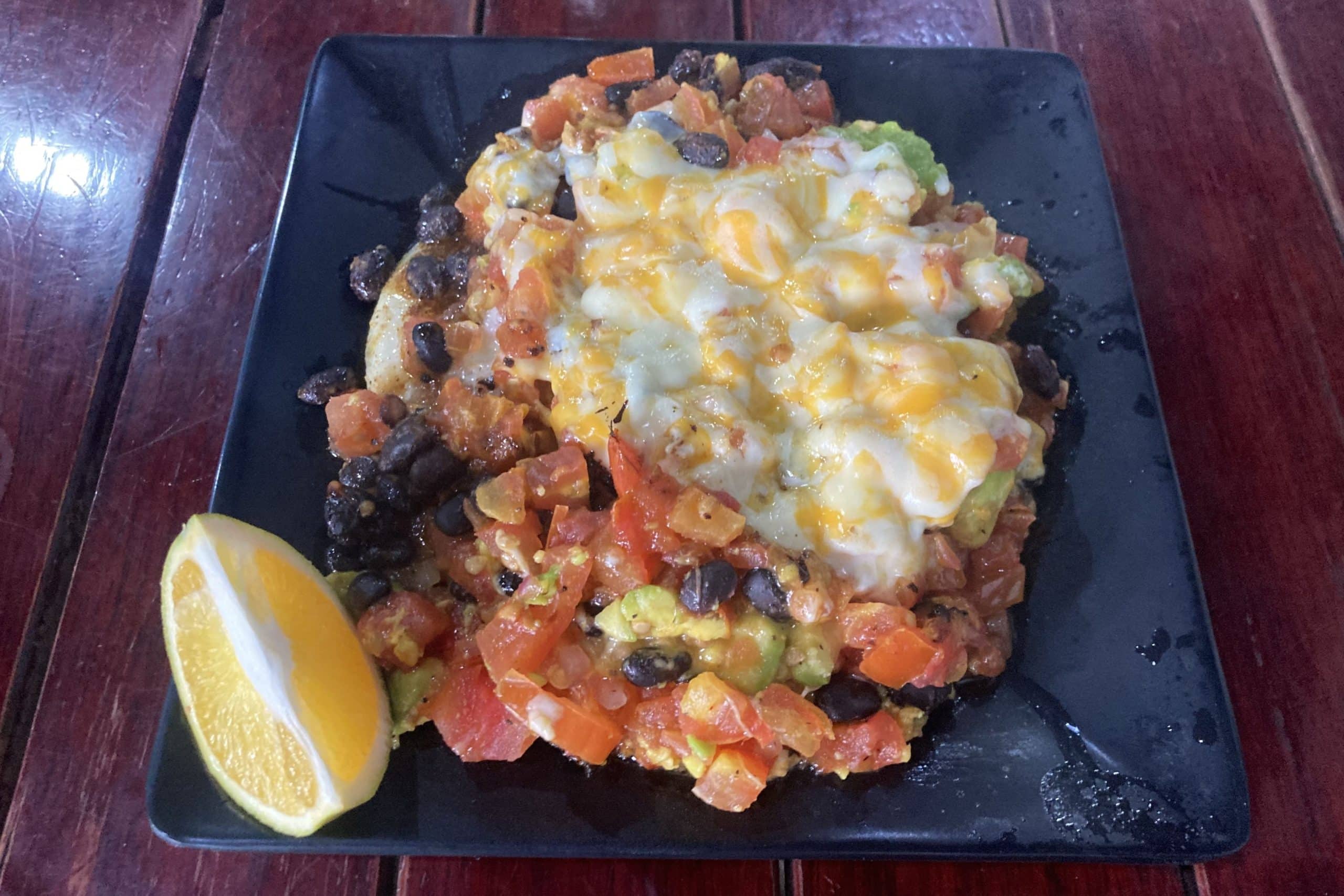
I also enjoyed the Venezuelan restaurant, preferring their style of arepas and tequeños to the Colombian style. Venezuelans serve arepas like a stuffed pita pocket, while Colombians cook them more like a pancake. Their whole menu looked fantastic, and I’ll happily try something else if I’m ever back in town.
You can also grab a snack in the main square, either from the requisite meat guy or the requisite fruit guy.
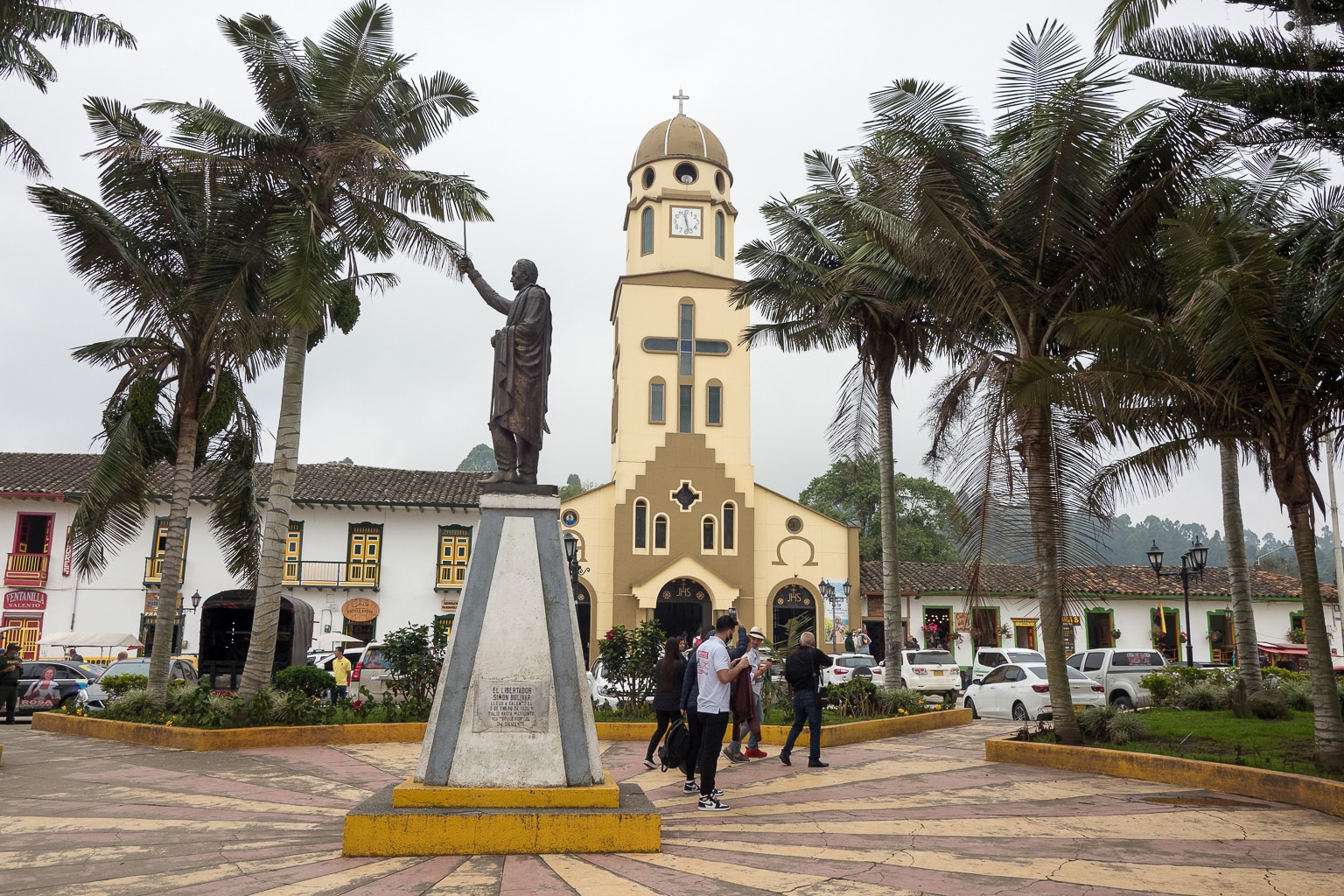
7. Ride Dirty on the Back of a Willy
To get around the valleys surrounding Salento, you’ll ride in a Jeep called a Willy.
You can catch a ride from the town square, which is also the hub for booking assorted tours and activities. They have Willy departures all day on different routes to hikes or coffee plantations, offering rides back to town when you’re done as well.
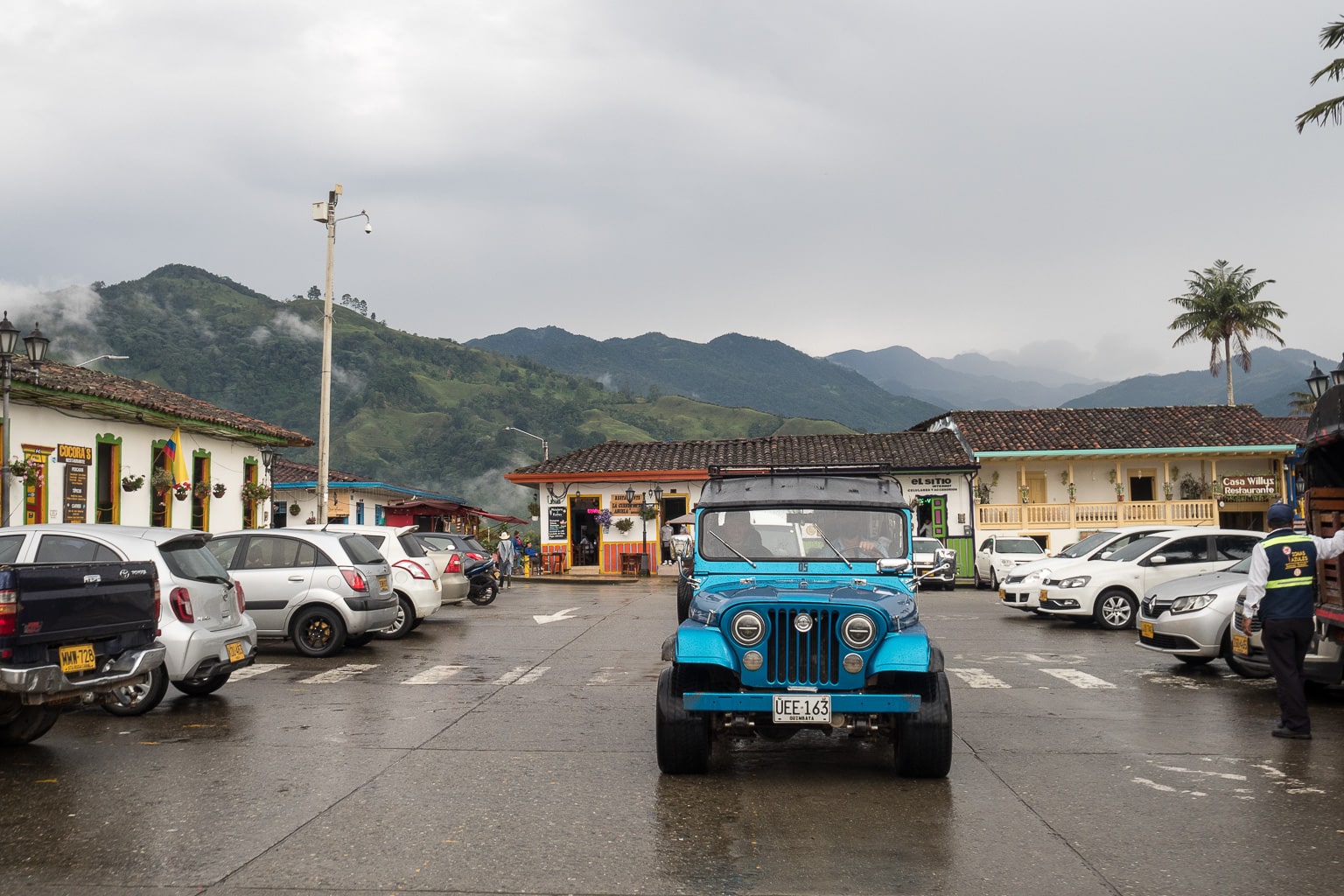
There’s a front seat, then everyone else piles into the back. Locals and tourists alike use Willys for transportation, and it can get quite crowded as locals are used to cramming in as many bodies as humanly possible.

Once the backseat is full, there’s room for a few more to stand on the tailgate, holding onto the roof for balance. It’s a ton of fun on the winding country roads, and not as dangerous as it looks – just watch your head on tree branches.
I’d say it’s a quintessential Salento experience, one you definitely won’t get at home – make sure to try it at least once!
8. Visit Filandia
Filandia is another charming town near Salento. It’s not as developed or discovered yet, so you’ll get a more untouched experience but may struggle without proficient Spanish.
You can take a day trip there or find accommodation in Filandia. You’ll have to take a bus from Salento or elsewhere. Enjoy the casual pace of life set amidst colonial architecture.
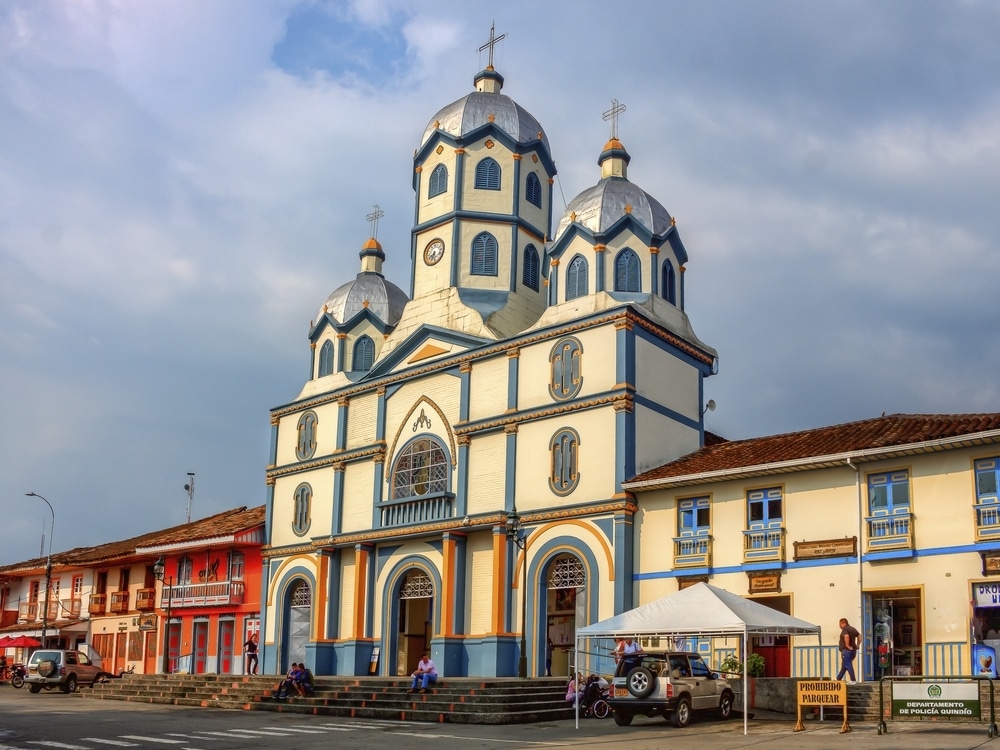
I didn’t visit Filandia myself, but I’d like to someday before it becomes as developed as Salento. That being said, while Salento certainly has a handful of tourist kitsch, I didn’t find it overbearing at all. Most of it is confined to the main drag, with the town overall retaining its distinct character.
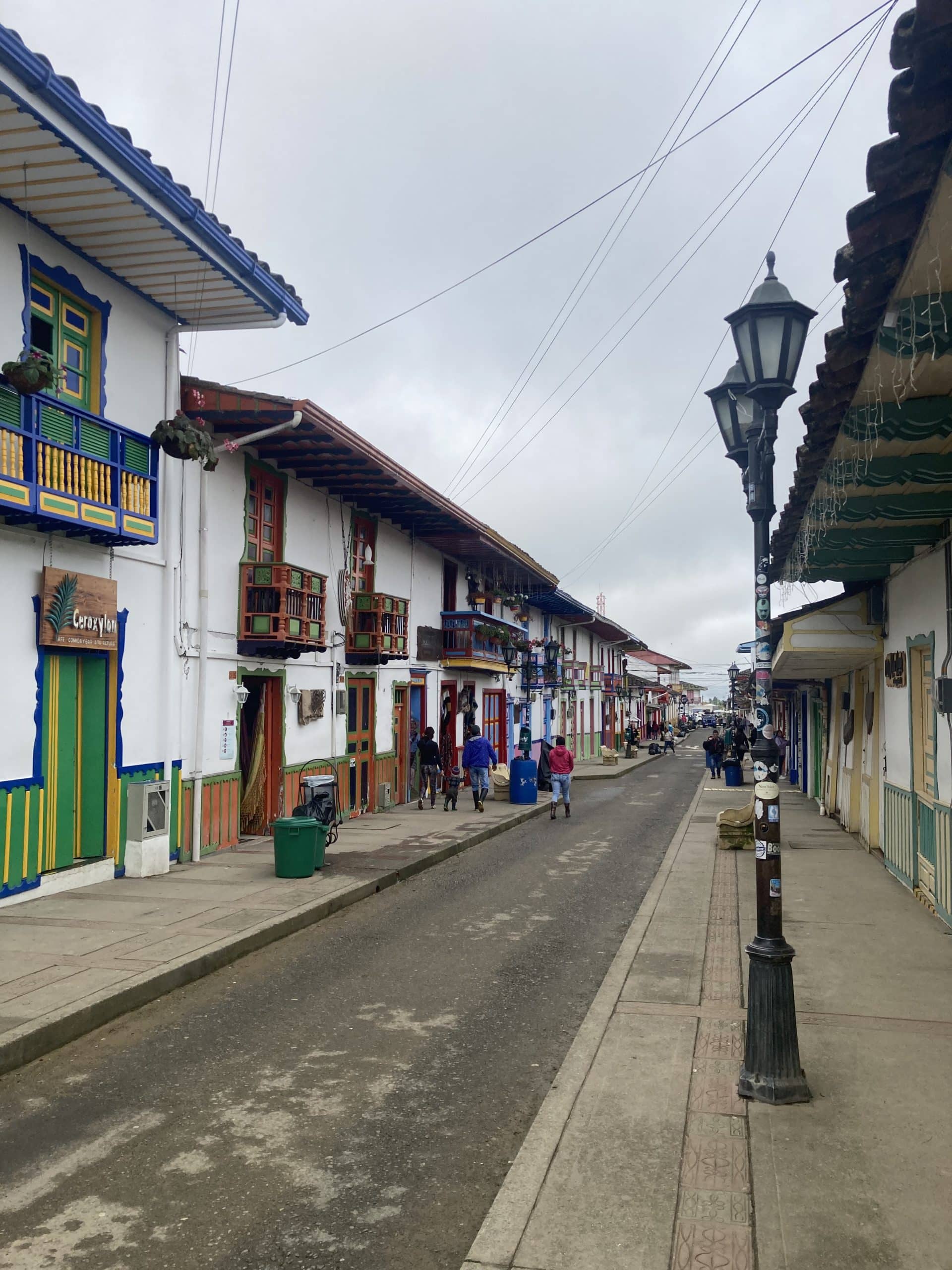
9. Do a Waterfall Tour on Horseback
If you have a bit more time, you can also take horseback tours from Salento.
Some of these tours take you to waterfalls. The region has plenty of hidden gems, which should come as no surprise when you see the lush landscapes.
You can also visit waterfalls by hiking or mountain biking if you’re not keen on horses.
10. Stay as Long (or as Short) As You Want
Salento is a great place to slow down as you escape the big cities and hectic beach towns. I found it to be the most peaceful place I’ve visited in Colombia.
However, you can also speed up if you wish. You can tick quite a few activities off the list rather quickly. I did the Cocora Valley hike and coffee tour on separate days, but I would’ve had time to do both on the same day.
If you’re travelling on a tight schedule, you can make good time in Salento, covering a lot of ground with just three or even two nights.
But if you’d like to stay longer, it’s also a perfect place to do nothing for as long as you want.
Conclusion
Colombia is a huge country, with immense diversity of landscapes and cultures. No visit is complete without a trip to a small town to contrast the big cities, and Salento is the chief example of one that retains its character while catering to tourists.
Make sure your Salento bucket list includes playing tejo and riding a Willy. Beyond that, take your pick from a variety of activities: the Cocora Valley hike is an irreplaceable classic, and a coffee tour is traditional to the region.
*2 hours later: Nope. It’s a political demonstration. Happy election weekend!






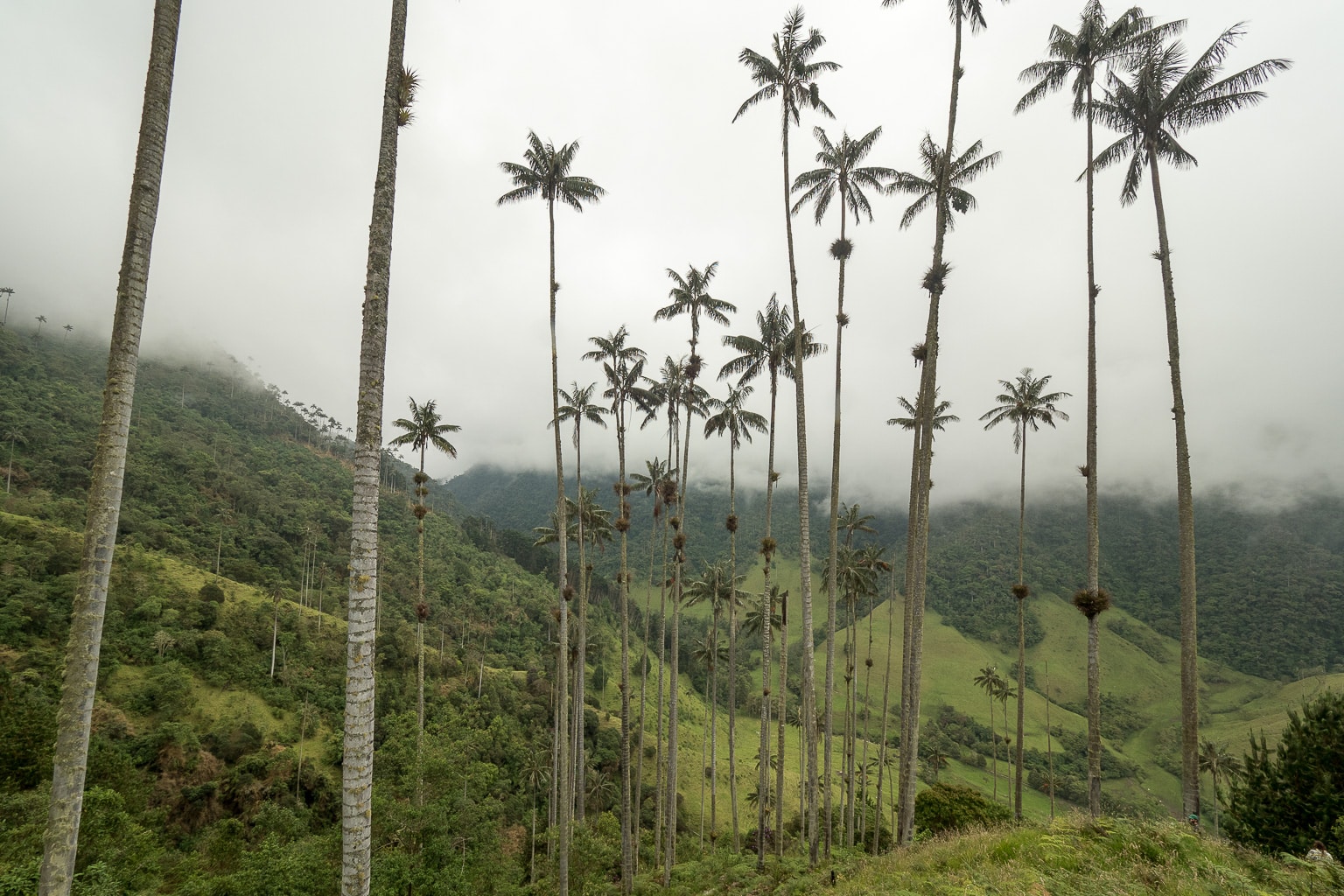
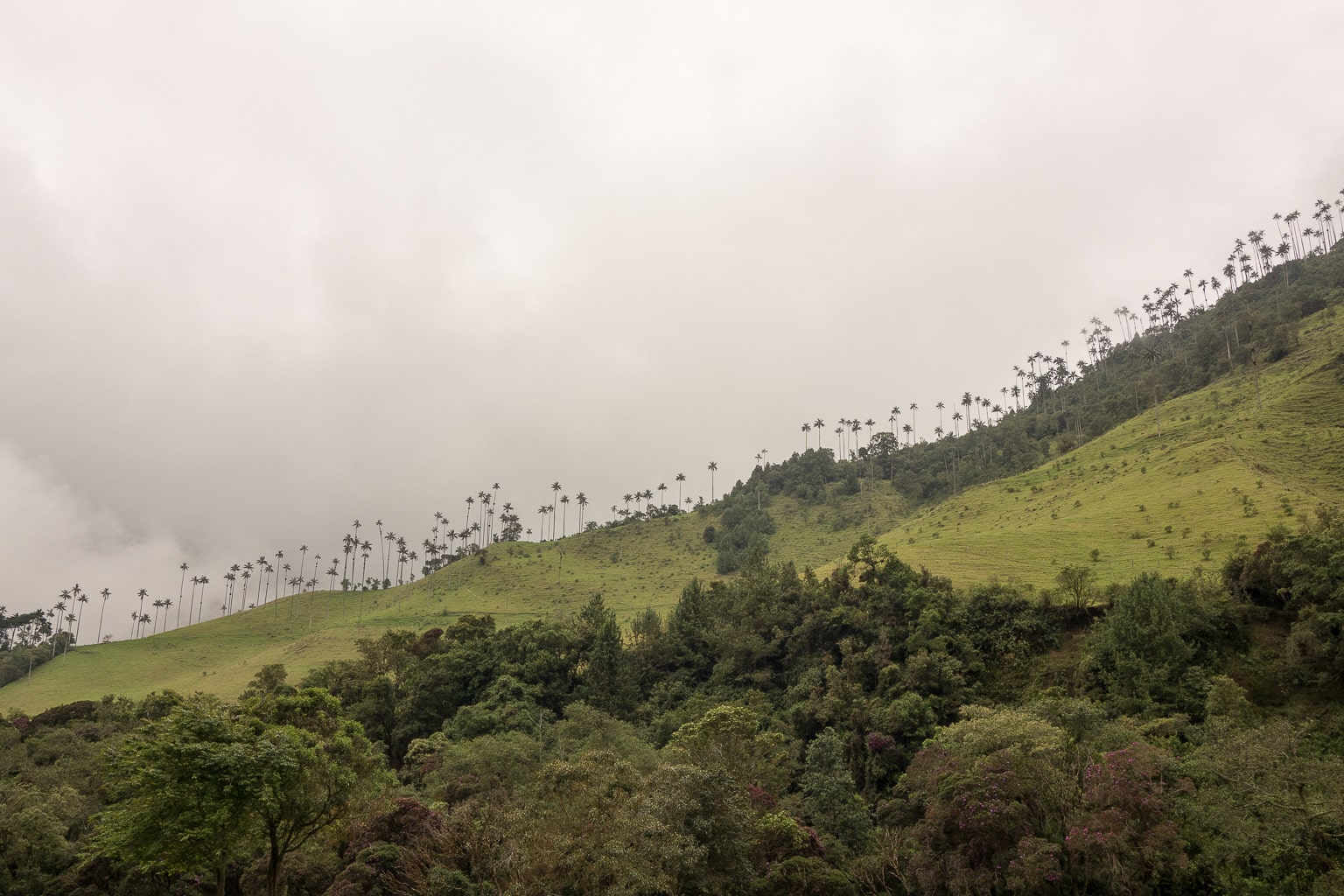
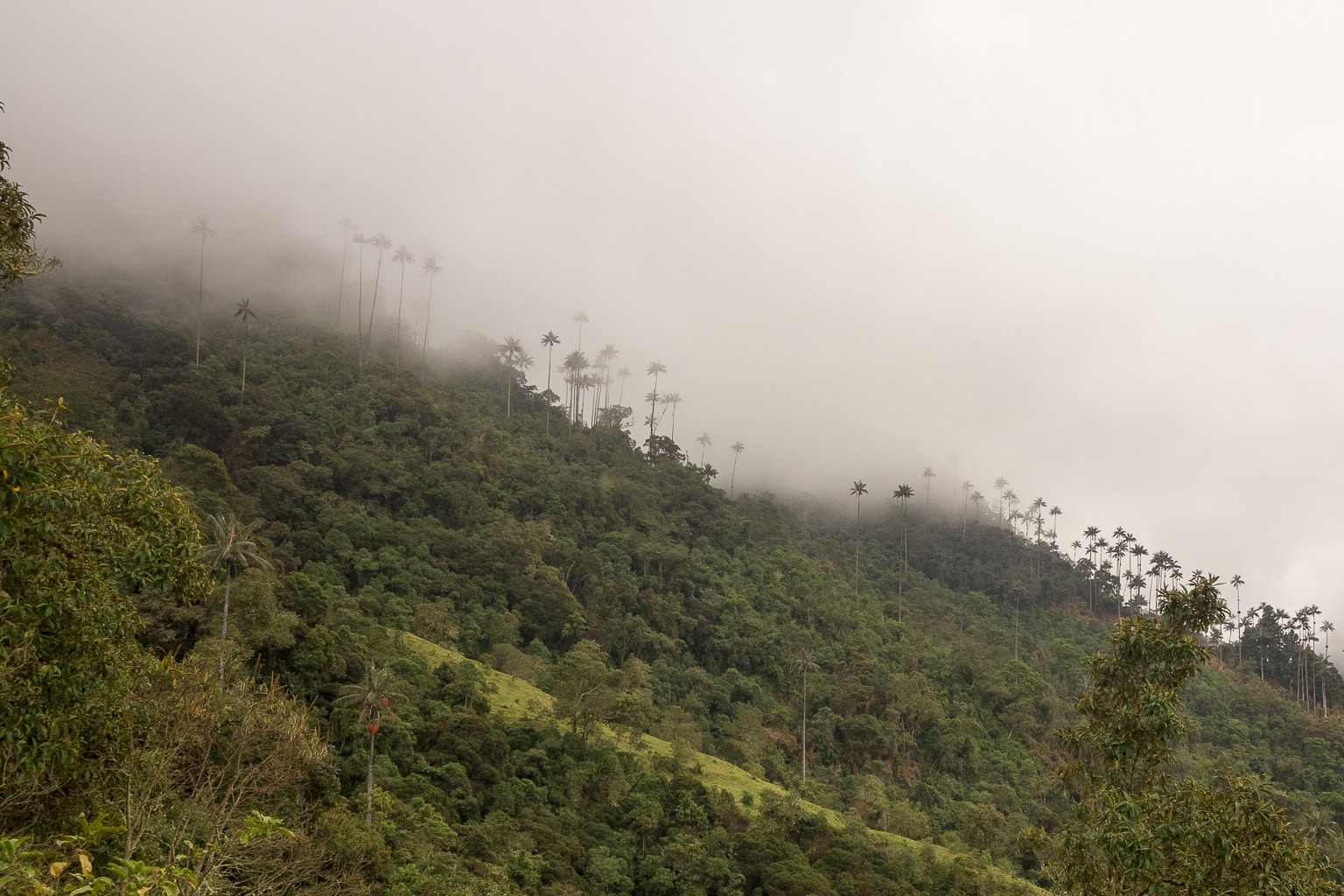
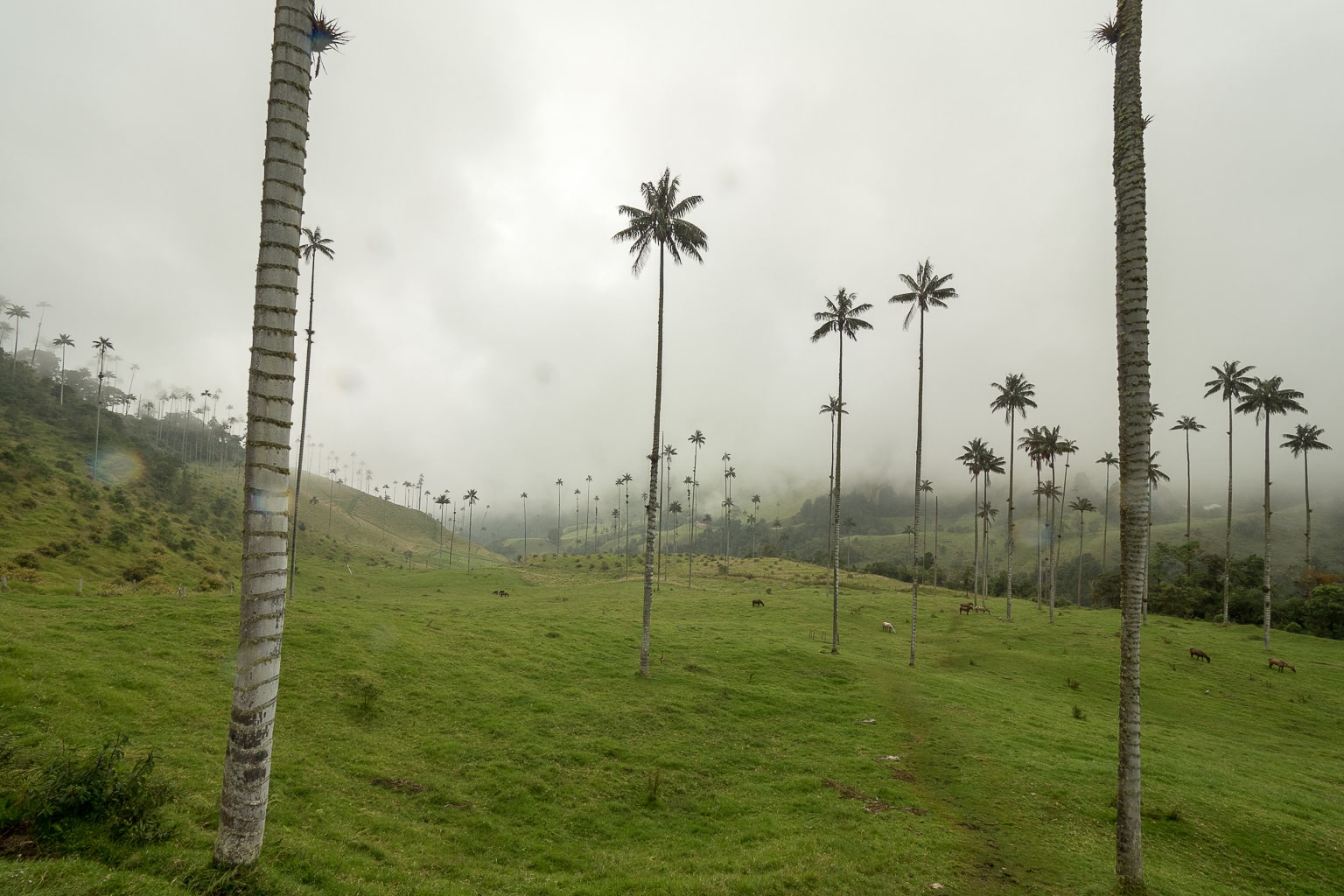
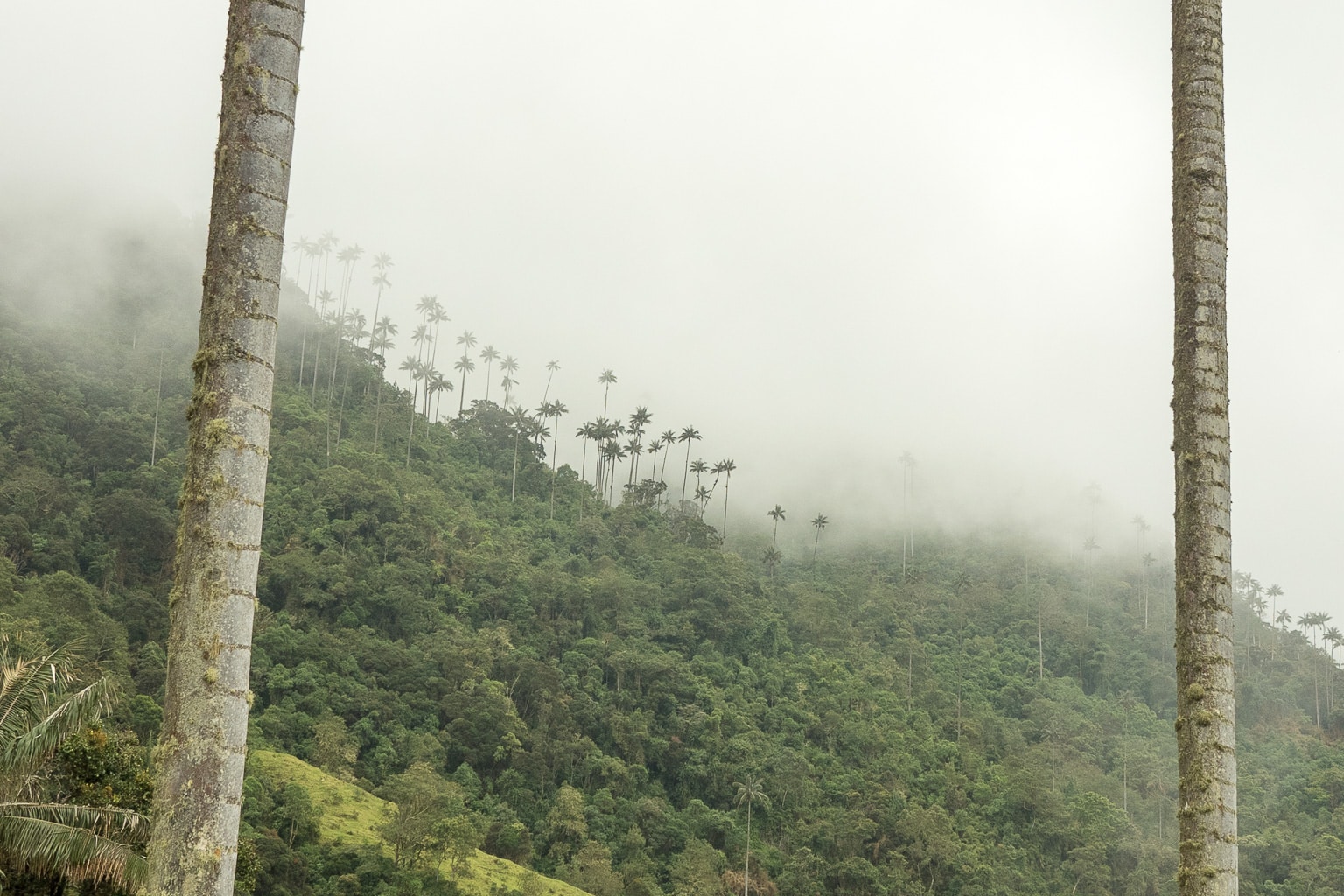
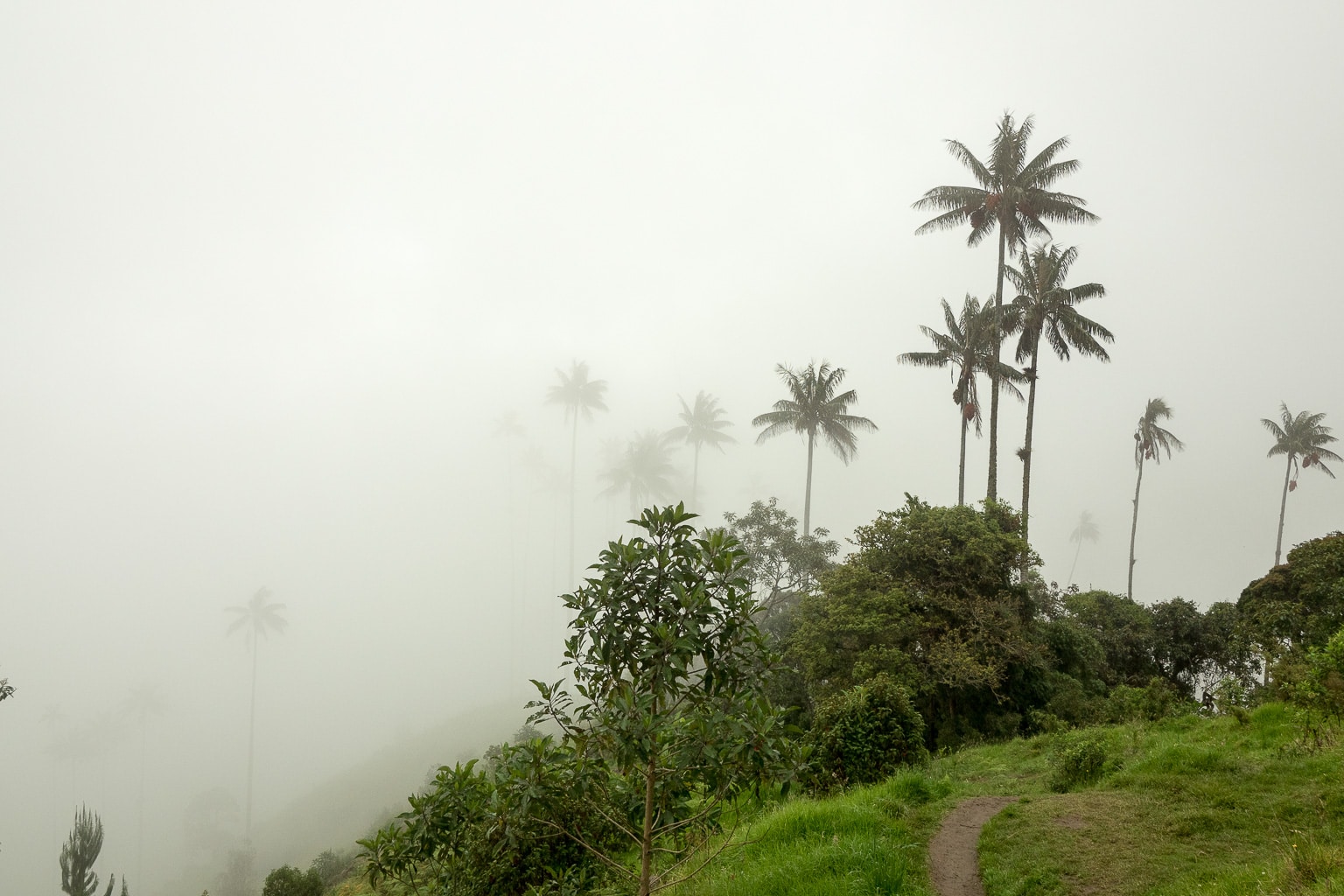
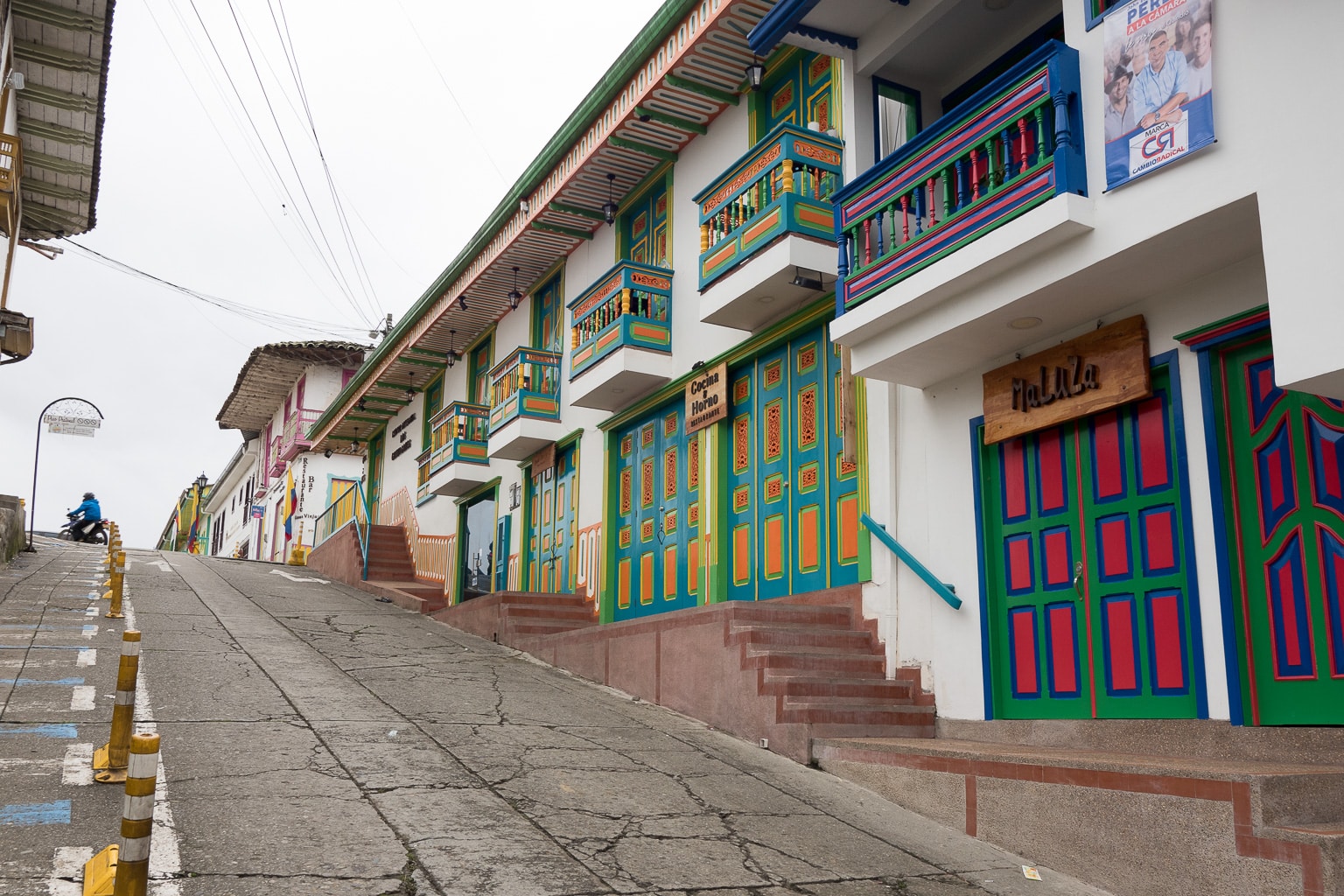
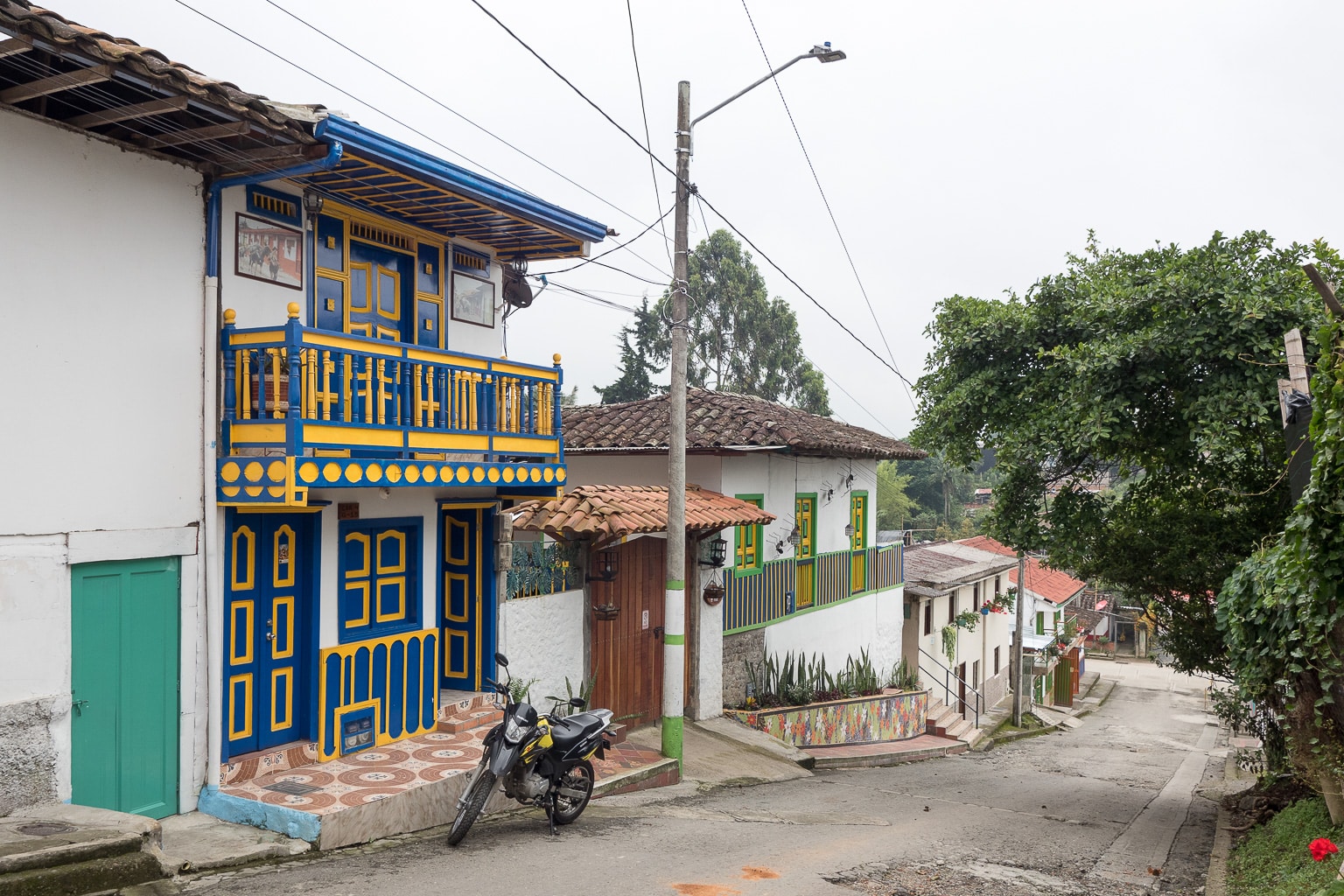
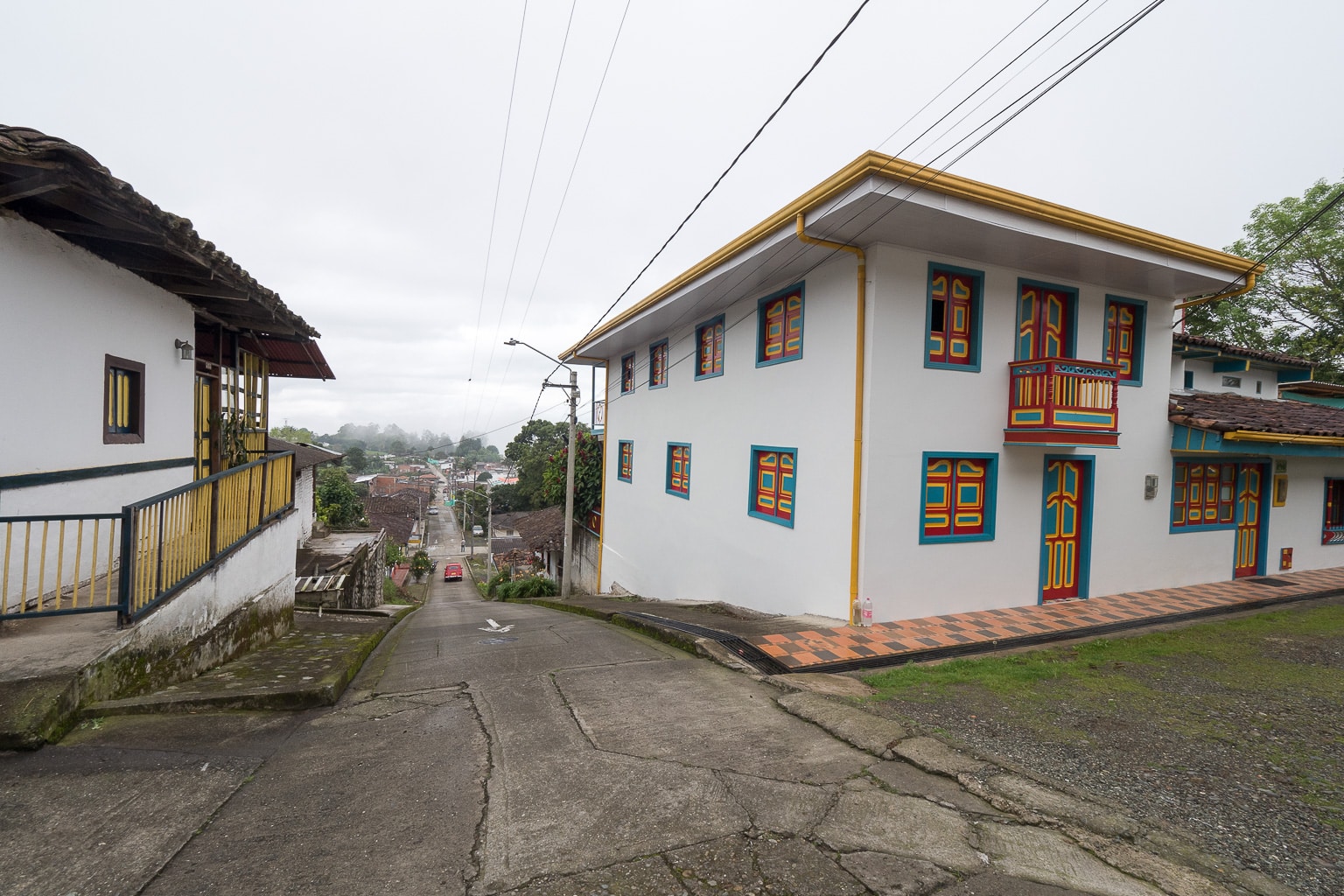
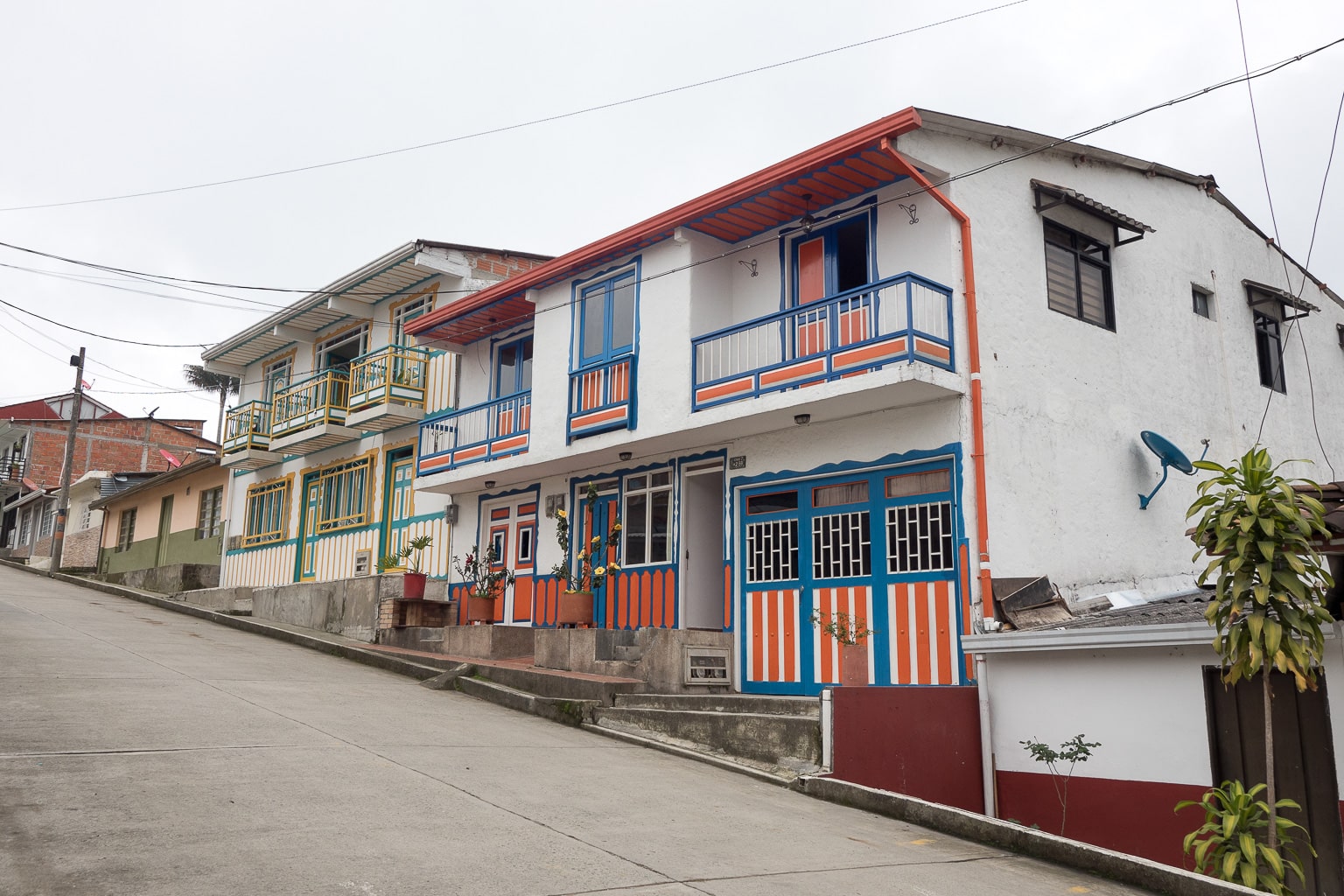
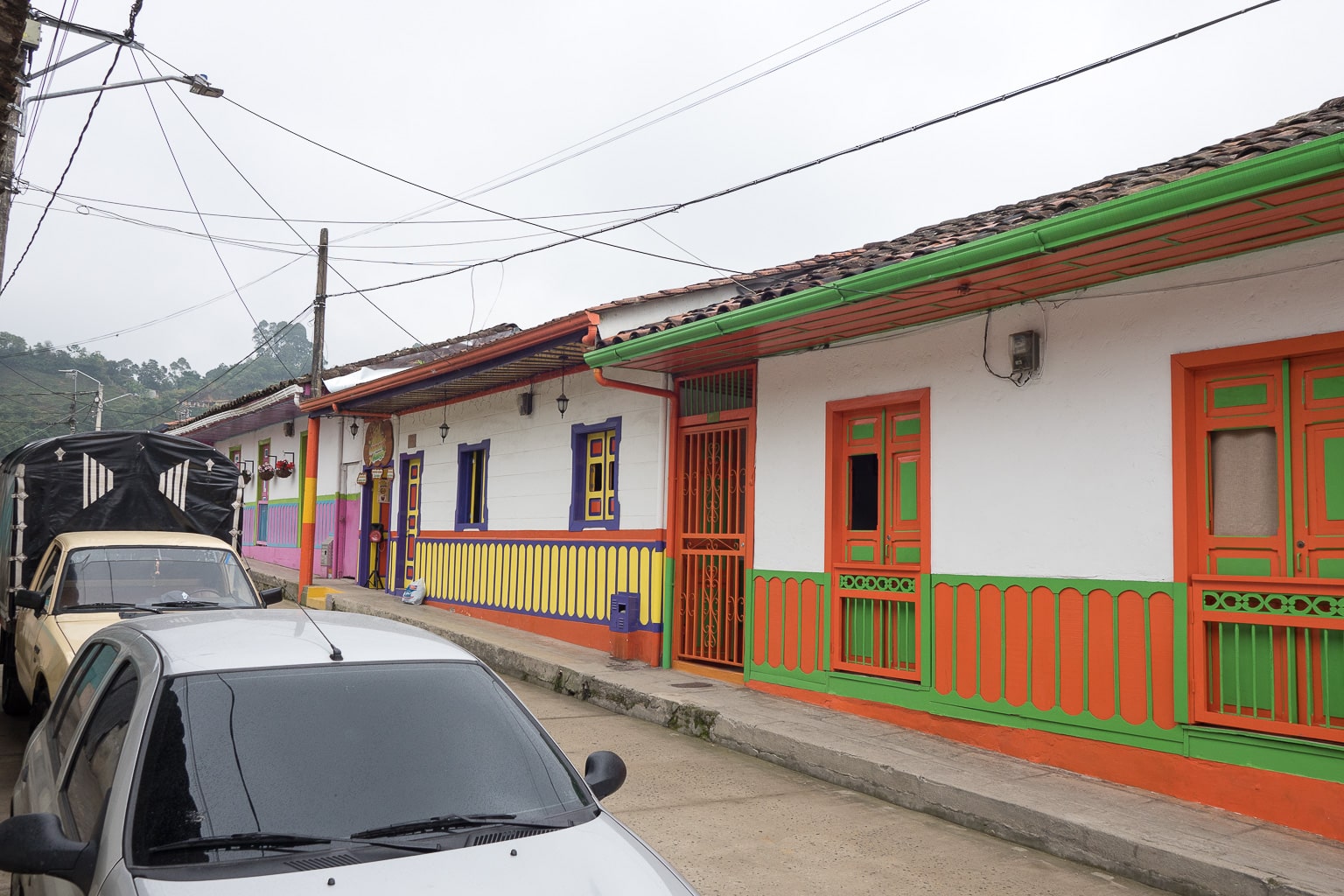









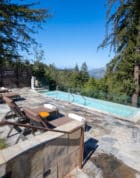



Any extra safety considerations when travelling to/within Columbia?
Hi Josh, thanks for the great article! I have a couple of questions. These are relevant for someone planning a longer workation which is how my wife and I travel:
1) How was the Internet connectivity? Is cell phone data ubiquitous or spotty?
2) Was credit card acceptance high, or was cash king?
Internet coverage and speeds are very good, although there’s quite a range between Marriott properties and small town boutique/hostel-type accommodations. That said, I had no trouble taking video calls from anywhere. I roughed it without a data plan – seems like the cellular network has good coverage but speeds may vary, good for text communication but maybe not for video streaming or data-intensive remote work.
Many shops and restaurants take credit cards, and most that do take Amex, but you’ll still need cash for taxis, street food, most tours, and some attractions.
Love the extended workcation goals, Colombia is a great place for it!
they call those jeeps willys because that’s the original name of the jeep. https://en.wikipedia.org/wiki/Willys
another great report, josh. i am super envious of your trip.